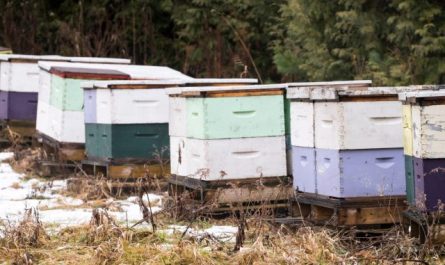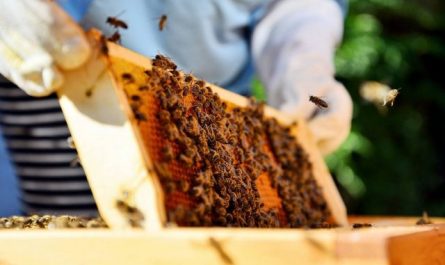Hedgehogs are frequent guests of gardens and vegetable plots. Most summer residents have encountered such unusual residents on their plots. Should you drive away the hedgehog or is it better to do everything so that it settles with you forever? What is the benefit of these animals and what harm can they cause? You will find detailed answers to these questions in today’s article.

What is the benefit of having hedgehogs in your yard?
Let’s start with the pleasant. Hedgehogs are omnivores, but their diet is based on insects. And this is the hedgehog’s biggest advantage on the plot – it will destroy harmful insects and their larvae. Its menu includes wireworms, mole crickets, cockchafers, caterpillars, ground beetles and other pests.
Hedgehogs also love to feast on slugs and snails. If you have problems with them, then the prickly guest on your site will become your best assistant. At the same time, although hedgehogs are omnivorous, they do not spoil the harvest, eating slugs and insects.
Another big plus of these animals is that they can destroy rodent nests, eat small mice and moles. A small prickly neighbor on the site will help you forget about mousetraps and poisonous baits.

Hedgehogs are natural enemies of snakes, so they do a great job of driving them out of the area. They exterminate their offspring, constantly destroying nests. The same thing will happen to birds that nest on the ground and constantly spoil the harvest.
What harm do hedgehogs do to your property?
Prickly neighbors on the site can be not only useful, but also dangerous. Perhaps the greatest danger of a hedgehog is rabies. Animals are carriers of this disease. As is known, there is no effective treatment for rabies, so the disease is fatal. The virus is transmitted with the saliva of a sick animal through a bite.

Of course, if you do not provoke the hedgehog, it is unlikely to attack you and bite. But you also need to remember about other animals on your property. If you have a dog or a cat, or maybe other predators, they can easily “quarrel” with the hedgehog and get bitten. And this can happen completely unnoticed by you. And if you do not get the necessary vaccination as soon as possible after the bite, the pet will not be saved. Of course, all this is only relevant if the hedgehog is infected with rabies.
But in addition to the most dangerous virus, the prickly neighbors from the forest carry many other diseases, including leptospirosis, salmonellosis, borreliosis, yellow fever, tick-borne encephalitis, ringworm, various parasitic diseases and worms. In general, all this will not be transmitted to you in any way if you follow basic rules of personal hygiene and do not come into close contact with the hedgehog. All such diseases are carried by the most common rodents that are found on every site. Therefore, you definitely do not need to perceive hedgehogs as carriers of any infection.

But the hedgehog’s prickly fur is quite dangerous: because of the needles, it cannot clean it well. Therefore, these animals carry fleas and ticks. This is especially dangerous if there are pets on the property, with the help of which fleas and ticks “move” to your home.
If you keep poultry, hedgehogs can greatly reduce its flock. They can get into nests and eat eggs, and they are also not averse to eating small chickens. To protect the livestock from prickly guests, you need to try to close their access to the chicken coop. Fortunately, hedgehogs are not rodents, they do not dig holes and passages, so it will be quite easy to keep them out of the chicken coop.
How to attract a hedgehog to your property?
If you are not lucky enough to have a prickly neighbor of its own free will, there are several ways to lure it. The best is to provide the hedgehog with a tasty daily diet and fresh drinking water. It is better to try to feed it in early spring, when there is little food in the forest, or in autumn, when the animals feed intensively, creating fat reserves for winter hibernation. In the summer, feeding them is almost pointless, since they rarely leave their natural habitats during this period.

Another condition for successfully luring a hedgehog to your property is to create a comfortable and warm home for it. You can either build a full-fledged house or simply provide the prickly guest with materials for construction.
And of course, hedgehogs will not settle where it is unsafe. They get along well with cats and do not feel threatened by them. But a dog, even a small breed, can become a big threat to a hedgehog. It is unlikely to settle in an area where a dog runs freely. If it is in an enclosure, the chances of luring a prickly neighbor become greater.
What to feed a hedgehog?
It is advisable to intensively feed the prickly neighbor only at the stage of luring it to the site. If you fully feed the hedgehog when it has finally settled in with you, it will do a disservice. It can become completely lazy and stop performing its “duties” to destroy insects and other pests. You can give the hedgehog more food in the spring and autumn, and in the summer it is better to only occasionally spoil it with treats.
If there are problems with snakes on the site, it is better not to give the hedgehog much food in the spring so that it will fight the snake lair more actively. But it is better to constantly put clean drinking water, pouring it into a heavy bowl, which will be difficult for the animal to turn over.
Many people think that hedgehogs love milk. And this is true, but this product can cause indigestion. And when feeding only milk, digestive problems are guaranteed for the animal.
To safely and deliciously feed your prickly neighbor, you can give him the following products:
- lean chicken,
- a fish,
- boiled eggs,
- wet or dry cat food,
- cheese,
- porridge on water, rice,
- fruit.
How to arrange a house for a hedgehog?
A box or basket measuring approximately 30x30x30 cm will do as a house. Make several small holes in it for ventilation and one small entrance. You can buy a ready-made house in a pet store, but not made of plastic, but of natural materials, vines or wood. The main thing is to create a forest coziness for the animal. The house should be placed in a quiet, dry place, preferably in a bush planting. Sprinkle it with pine needles, brushwood or dry grass on top. Put dry leaves inside.

The house should be located near the feeding area, and it is even better to place the bowls right in front of the dwelling. Otherwise, the hedgehog may not find and appreciate your architectural skill and will simply settle somewhere in its secret place. Hedgehogs often prefer to settle in a warm hidden place. For example, in a hole near the house where heating pipes run, next to a warm barn or in dry places under a canopy, under a porch, and sometimes even in old furniture.




















